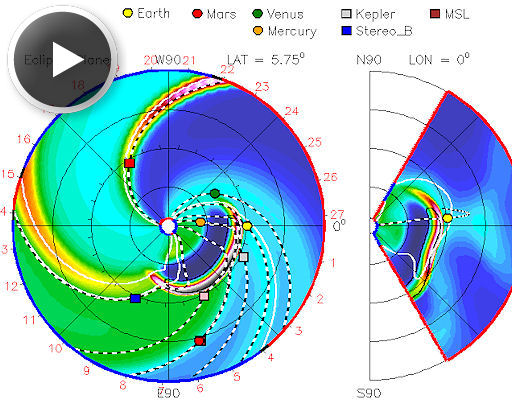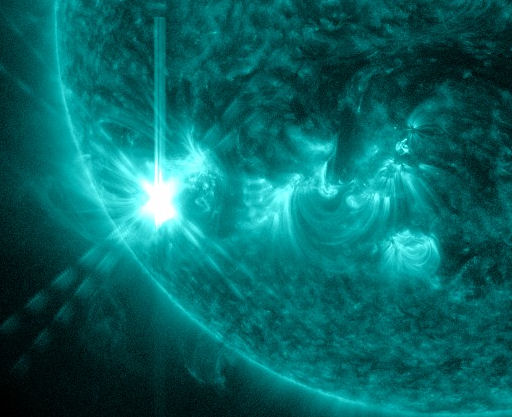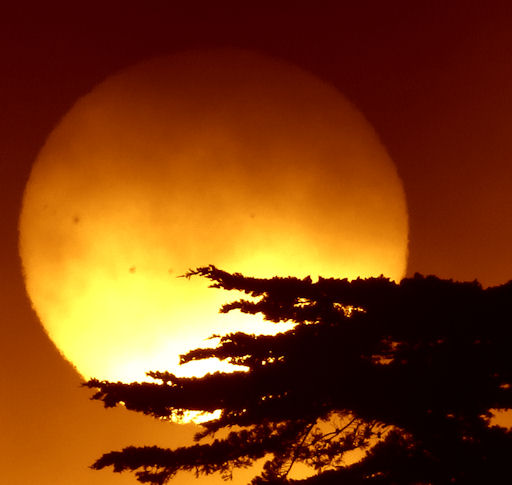Пятно 1532, ряд вспышек класса М
30-07-2012, 10:05. Разместил: VP
NCOMING CME, WEAK IMPACT EXPECTED: A coronal mass ejection (CME) produced by Saturday's M6-class flare is heading toward Earth. According to analysts at the Goddard Space Weather Lab, the cloud could deliver a glancing blow to our planet's magnetic field on July 31st around 1500 UT (+/- 7 hours). Click to view the animated forecast track:
This is a slow-moving CME. The cloud's low speed (382 km/s estimated) combined with its glancing trajectory suggests a weak impact is in the offing. Nevertheless, polar geomagnetic storms are possible when the cloud arrives. Aurora alerts: text, voice.
The CME will also hit Mercury, probably with greater force. Mercury's planetary magnetic field is only ~10% as strong as Earth's, so Mercury is not well protected from CMEs. When the clouds hit, they can actually scour atoms off Mercury's surface, adding material to Mercury's super-thin atmosphere and comet-like tail.
SOLAR ACTIVITY PICKS UP: Sunspot AR1532 is crackling with M-class solar flares. The latest, an M6-class eruption on July 28th (2056 UT), produced a bright flash of extreme ultraviolet radiation, shown here in a snapshot from the Solar Dynamics Observatory:
Update: Contrary to earlier reports, this explosion did produce a CME and the cloud is heading for Earth. According to a forecast track prepared by analysts at the Goddard Space Weather Lab, the CME will reach our planet on July 31st at 1500 UT (+/- 7 hours). Weak to moderate geomagnetic storms are possible when the cloud arrives.
FOGGY SUNSPOTS: Living in a fog can have its advantages. For one thing, it allows you to see big sunspots. Mila Zinkova of San Francisco, California, sends this picture of the foggy sunset on July 28th:
The tree limbs point across the solar disk to sunspot group AR1532, the source of at least one M-class solar flare per day since Friday. NOAA forecasters estimate a 25% chance of additional M-flares during the next 24 hours, although the actual odds seem higher. More flares (and more spotted sunsets) are in the offing.
29.07.2012 года
График вспышечной активности Солнца
Рентгеновское излучение Солнца с 28 июля 2012 года по 29 июля 2012 года по данным спутника GOES-15

Магнитные бури за последние три дня

Вернуться назад



